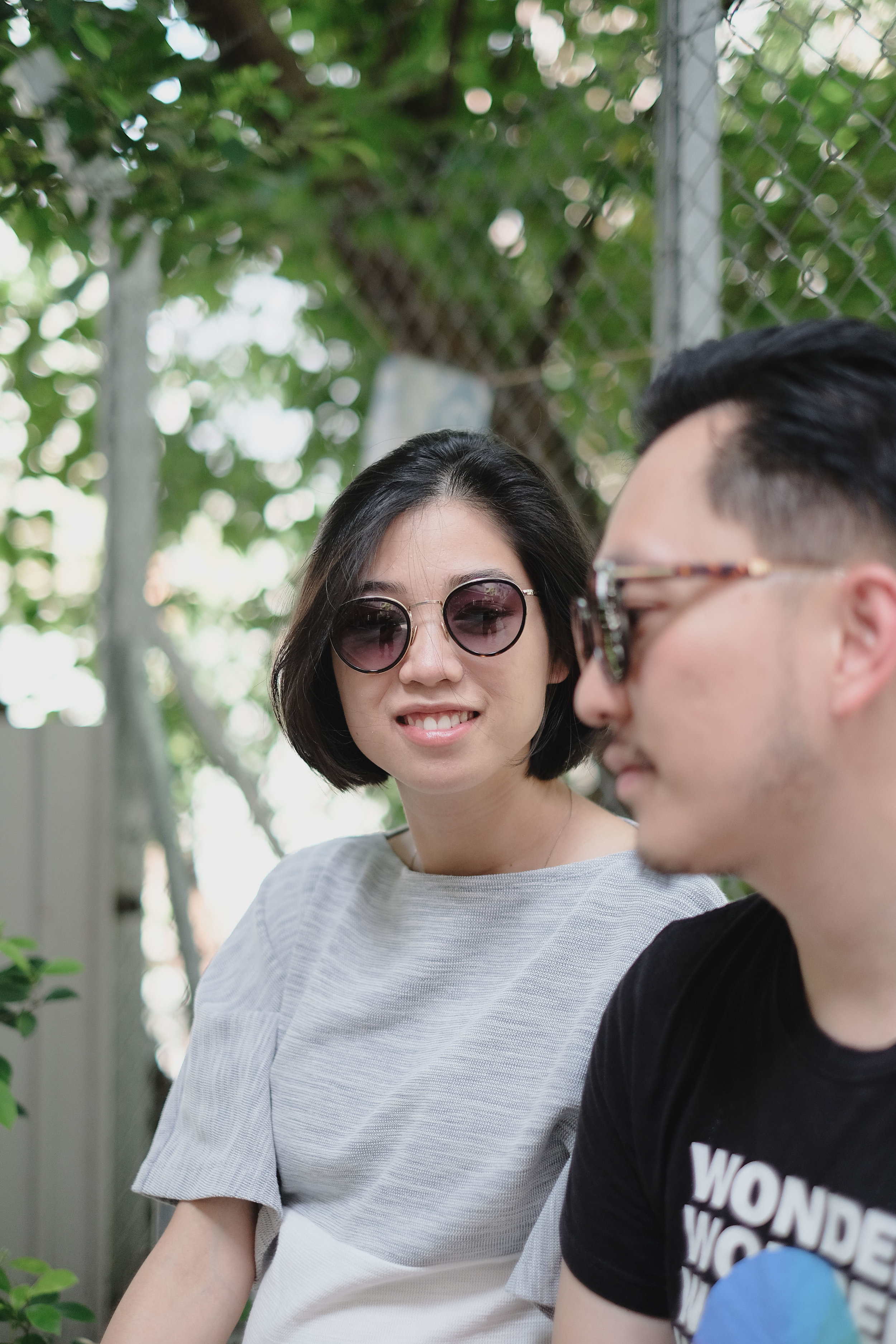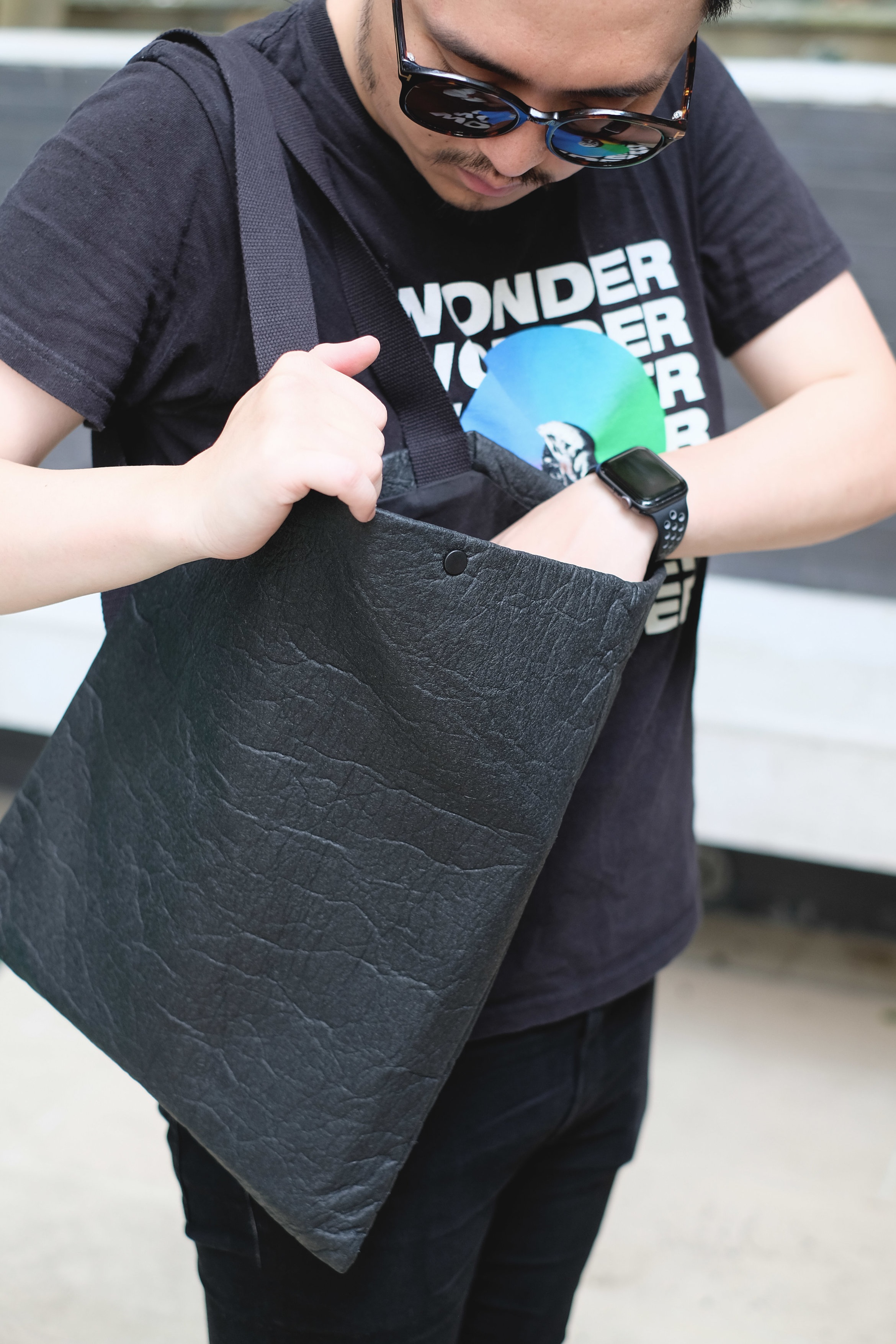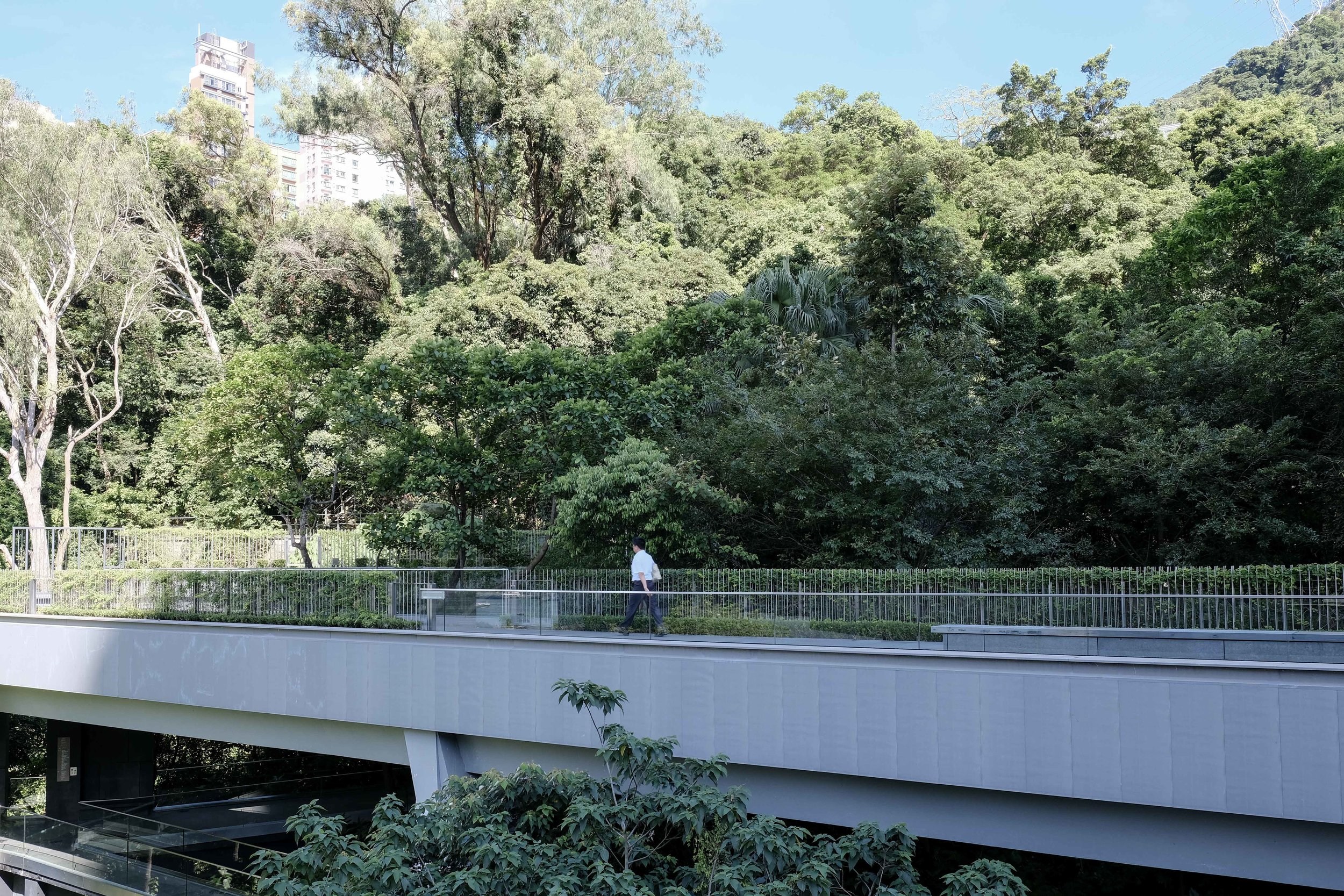“Friendship is born at that moment when one person says to another: "What! You too? I thought I was the only one.” ― C.S. Lewis
Friends are such gifts in life.
When we meet friends, we connect with them because there’s often a common thread between us (or multiple common threads), and that reflects a small part of who we are. When we discover those common threads, it’s an unrivalled joy.
We realised that we have some pretty inspiring friends, and so for our blog, we decided to start a series based on our friends. Many of them are very talented, and we wanted to share with everyone who they are, the things they do and thoughts that they have. So we gave them a tote bag, followed them around for a bit, and asked them some questions.
So without further ado, let’s begin the series!
introducing: Caleb (@calebtwinskitchen) and Shiren (@shirenhomusic).
Left: Caleb with Piñatex DIAGONAL tote bag
Right: Shiren with Natural U tote bag
Q: What is your name and what do you do?
Caleb (C): Caleb Ng (Co-founder of PRESET and Interval Coffee Bar, Common Ground).
Shiren (S): Shiren Ho; Interior designer.
Q: What does a day in your life look like? (Feel free to describe a weekday or a weekend)
C: Work, work and work.
S: A typical weekend: Exercise, relax, meeting family/friends, and dinner at home made by my husband (if I'm lucky).
Q: What are the items that follow you on a daily basis, or you love to bring on your day off?
C: iPad Pro, Apple watch, iPhone, sun glasses, black t-shirt, reusable straw.
S: Sunglasses and umbrella.
Q: Coffee or tea? What is your go-to order?
C: Morning: espresso, Afternoon: pourover coffee or tea.
S: Coffee; I usually make my own latte or pour over.
Q: What do you love most about the city you live in?
C: The courage to stand against something wrong.
S: The diversity and interesting people. Hong Kong is a city that gathers people from different backgrounds and those who have been exposed to other cultures. This diversity encourages different points of views, which I see as valuable a resource to expand my own horizon.
Q: Share with us one way you express yourself creatively?
C: Cooking.
S: I write songs that mostly reflect on personal experiences. Some of them are related to my faith, some are more light-hearted, but they all intend to bring a cheerful and positive vibe to the listeners. Writing songs allow me to stay creative even outside of work. And since I'm not a professionally trained musician, I also want to encourage those who are not to express themselves through a medium that they like - whether they're good at it or not.
(Editor’s note: Might I add, very beautiful, soothing songs, check them out at https://www.facebook.com/shirenho/)
Iced Latte from (@commongroundhk)
Q: Introduce us to a cause/belief you care about, and why others should too.
C: Freedom of accepting yourself. A lot of the times we want to be someone else, or we don’t understand our true strength. It’s like Michael Jordan playing baseball. There’s so much power from simply accepting who you really are.
S: Reduce food waste and recycling; We are creating our own future. Don't create it with more garbage!
Q: If there’s a young person who wants to enter your field of work, what advice would you give them?
C: You need to be a workaholic.
S: Be open to failures and challenges. There are many things that you simply can't learn from books, but through the experience of trial and error. When you're not afraid of failing or taking up challenges, it opens up to a lot more possibilities and allows your imagination to expand, which is particularly important in any creative field of work.
Q: If you had a free day all to yourself, and could just pick up your bag and leave, where would you go?
C: A hike at Sai Kung!
S: I would go hiking alone.
(I guess they really are made for each other)
Q: Share with us an important lesson you learnt over the past few years.
C: Accepting yourself as who you are.
S: Learn better by failing. After a "mistake", take time to intentionally reflect. Don't be too hard on yourself and focus on moving forward. Most of the time, when you make a "mistake", it seems like a big deal at the time but when you look back, that "mistake" usually helps you grow. So be thankful for these "mistakes".
Q: What is the most attractive quality of a person?
C: Kindness.
S: Humility.
Left: Caleb with Piñatex DIAGONAL tote bag
Right: Shiren with Natural U tote bag
P.S. If you haven’t noticed yet, Caleb and Shiren are expecting a new addition soon, join us in wishing these parents-to-be a wonderful journey and efficient sleep cycles!












































































